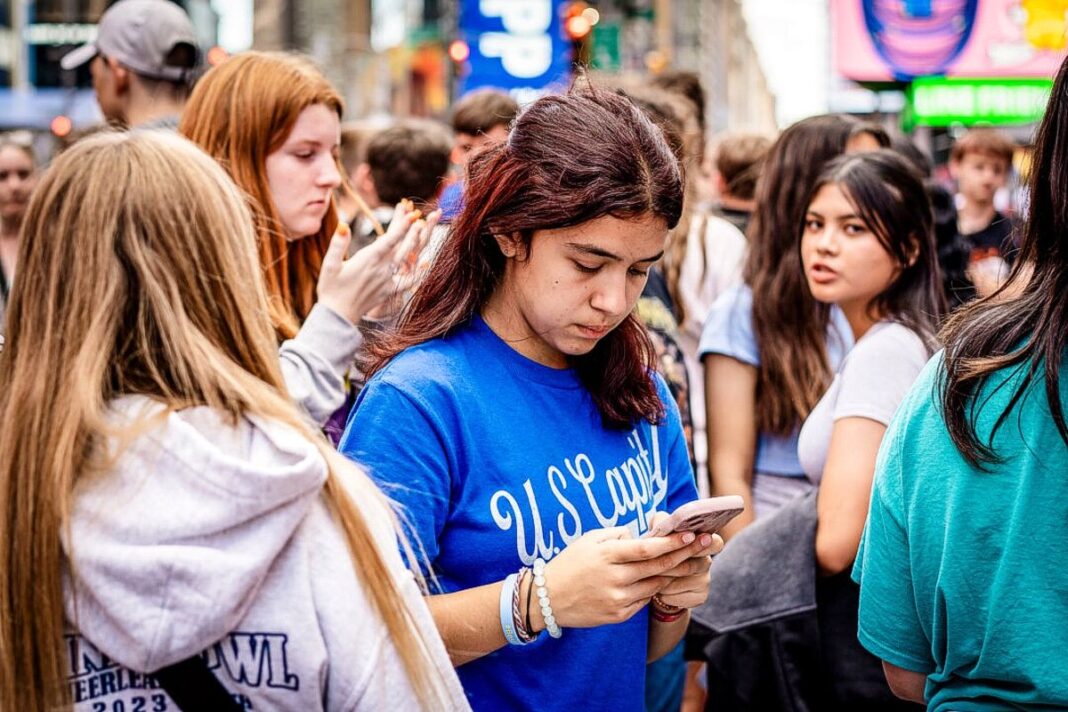The amount of time teens spend on phones and social media, is trumped by compulsive, addictive use.
By the time many children turn 10, they may already be on a path that doubles—or even triples—their risk of suicide.
A new longitudinal study published Wednesday in JAMA Network Open found that young people who compulsively use phones, video games, or social media face significantly higher risks of suicidal ideation and emotional distress by early adolescence.
“The most important takeaway is that it’s not the amount of screen time that puts youth at risk—it’s how they use screens that matters most,” Yunyu Xiao, lead author and assistant professor at Weill Cornell Medical College, told The Epoch Times in an email.
Children who felt upset when separated from their phones, struggled to stop using apps, or turned to screens as a coping mechanism were most likely to use screens compulsively, which predicted later mental health challenges.
“This shifts the conversation away from concerns about screen exposure and toward a more precise focus on addictive use,” Xiao said.
Risks and Early Warning Signs
The study, which followed more than 4,200 children for four years as part of the Adolescent Brain Cognitive Development study, is the largest long-term brain development research in U.S. history.
Unlike earlier studies that emphasized total screen time, researchers analyzed “addictive use trajectories” — patterns defined by increased compulsion, emotional dependence, and difficulty disengaging from screens over time. These patterns proved to be more predictive of suicide risk than screen time alone.
Children in the study were asked to respond to statements like “I feel upset when I can’t use my phone” or “I use social media to feel better when I’m down.”
Based on their responses, researchers grouped kids into low, increasing, or high-risk patterns by tracking how their screen habits and emotional attachment to devices changed over time.
Nearly half showed signs of high or escalating screen dependency–often beginning around age 10.
By age 14, nearly one in three had developed a pattern of increasingly compulsive social media use, and about one in four showed similar behavior with mobile phones. These kids were up to 2.4 times more likely to report suicidal thoughts or behaviors than those with low-addictive use.
More than 30 percent of children transitioned from lower- to higher-risk patterns during early adolescence—often with serious consequences.
“What surprised us was the lack of association between total screen time and suicide-related or mental health outcomes,” Xiao said. “In contrast, the trajectory of addictive use—marked by high and increasing compulsion, distress, and difficulty disengaging—was associated with a two- to threefold increase in suicidal behaviors and ideation.”
Girls were more likely than boys to develop problematic social media habits. Boys, by contrast, were more likely to show addictive use of video games.








